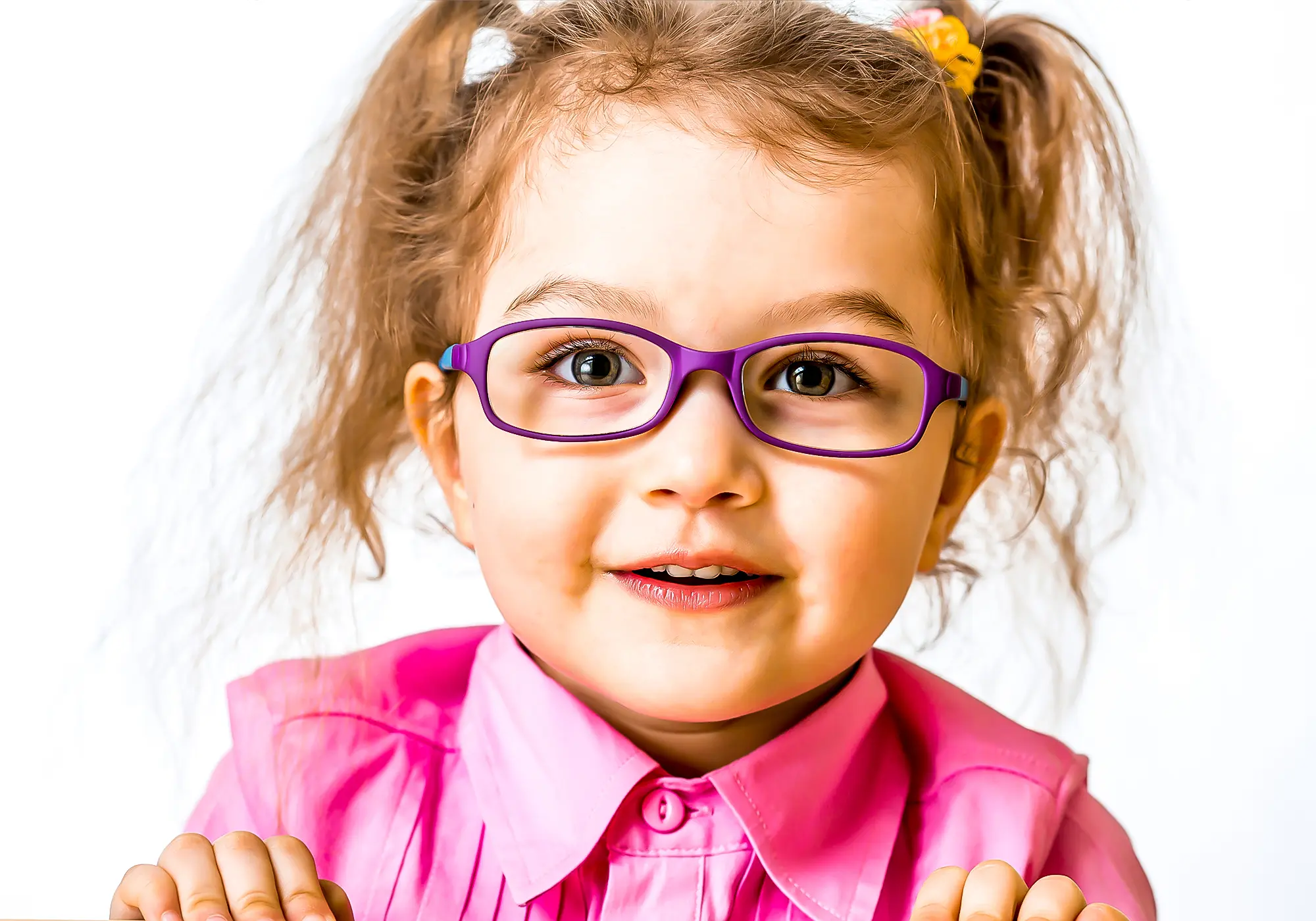Slow the progression of nearsightedness in children.
Myopia, or nearsightedness, is a common condition that causes blurry vision when looking at a distance.
Affecting 30% of North Americans, the prevalence of myopia is increasing rapidly. Myopia is the most common vision impairment in children and young adults.

Myopia in Children
Most children should have a properly focused eye around six years of age.
However, at this point, some will start to develop myopia, which happens when the eye grows too long, preventing viewed objects from being focused directly on the retina.
Since myopia typically begins in childhood and usually progresses rapidly, early intervention can slow the progression. Keeping up with your child’s comprehensive eye care will encourage early detection.
How We Treat Myopia at Pazur Eye Care
When images are focused behind the peripheral retina, it sends a signal to the eye to continue growing. Our objective is to slow myopic eyeball growth by adjusting this focus with specialized optics. Essentially, eye development can stabilize and therefore minimize the need for stronger eyeglasses.
At Pazur Eye Care, we believe in providing impactful care. By incorporating new technologies into our practice, we can ensure your child receives the latest in eye care.
By utilizing technology that measures the length of the eye, we are able to closely monitor growth patterns and the progression of myopia.
When it comes to managing childhood myopia, we consider the following options:
MiSight® Contact Lenses
MiSight® Contact lenses are specially designed multifocal contact lenses that can slow myopia progression in children aged 8 to 12 years old at the beginning of treatment.
Developed by CooperVision, the lens is a daily wear, single-use contact lens that can be thrown away at the end of the day.
For more insight into the technology behind the MiSight® Contact Lenses, click here.
MiyoSmart® Spectacle Lenses
MiyoSmart® lenses with D.I.M.S. (Defocus Incorporated Multiple Segments) technologies work to curb myopic progression by an average of 59%.
Developed by Hoya, the lens is a non-invasive way to manage myopia in children. In the same way braces are used to improve a child’s oral health, MiyoSmart® lenses improve your child’s eye health.
For more insight into the technology behind the MiyoSmart® Spectacle Lense, click here.
Pharmaceutical Treatment
Administering a daily low dose of Atropine eye drops can significantly slow the progression of myopia in children.
It is one of few treatment options that have been well researched and listed as an ideal option.
If you’d like to read more on what the experts have to say, click here.
FAQs
Will my child feel discomfort in their eyes with the MiyoSmart® lenses?
Your child shouldn’t experience any more discomfort than is typical when adjusting to a new prescription. It typically takes approximately 1-2 weeks to adjust. However, it’s possible they may not experience any discomfort at all.
Please keep in mind that it’s normal to experience mild symptoms such as lens awareness, variable vision, occasional tearing (watery eyes) and slight eye redness during the adaptation period. Generally, these symptoms disappear within a few days. If they persist, contact our office.
Does my child need to wear the MiyoSmart® glasses all day long?
Yes, your child should wear the glasses all day during the first week or two while adapting to the lens, except for when playing sports.
Does my child need to wear the MiSight® Contact Lenses all day long?
New contact lens wearers may wish to increase their wearing time slowly over the first week as they adapt to handling and wearing lenses.
A suggested maximum wearing time for the first week may be as follows:
- Day 1: 6 hours
- Day 2: 8 hours
- Day 3: 10 hours
- Day 4: 12 hours
- Day 5: 14 hours
- Day 6: All waking hours
Based on the clinical study, it is recommended that the patient wear the lens for a minimum of 10 hours per day for at least 6 days per week. Daily wear lenses are not indicated for overnight wear, and patients should be instructed not to wear lenses while sleeping.
How do we know the prescribed treatment plan is working?
Multiple follow-up appointments will be scheduled to measure the prescription and axial length of the eye to determine if the myopia progression is decreasing. One tool we use to monitor progression and track intervention is with axial length measurement.
What is the benefit of MiyoSmart® compared to single vision lenses?
It decreases the progression of myopia by 59%. By decreasing myopia, we can dramatically decrease the risk of eye disease as the child becomes an adult.
What is the recommended adaptation period for the MiyoSmart® Spectacle Lenses?
We recommend a 1 to 2 weeks adaptation period where we recommend constant wear and avoid sports. MiyoSmart® is considered to be very easy to get used to, compared to a new pair of single vision lenses.
